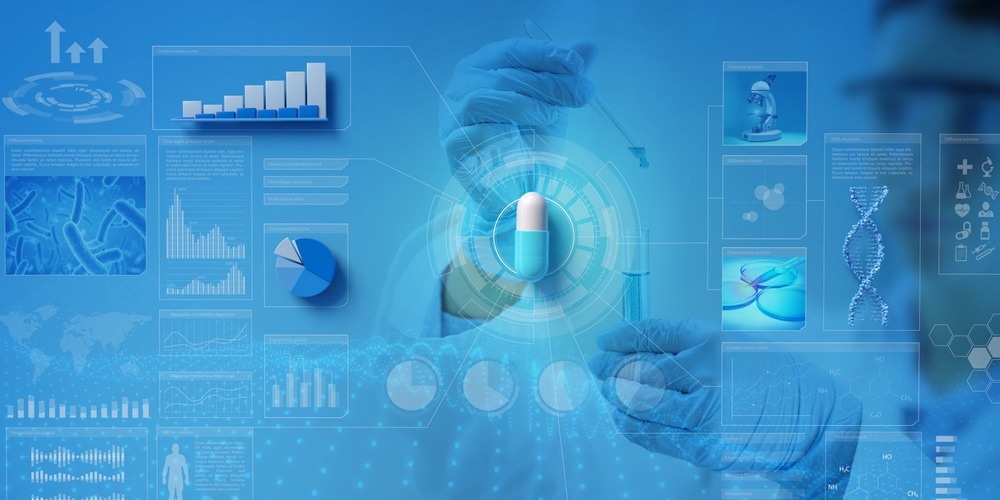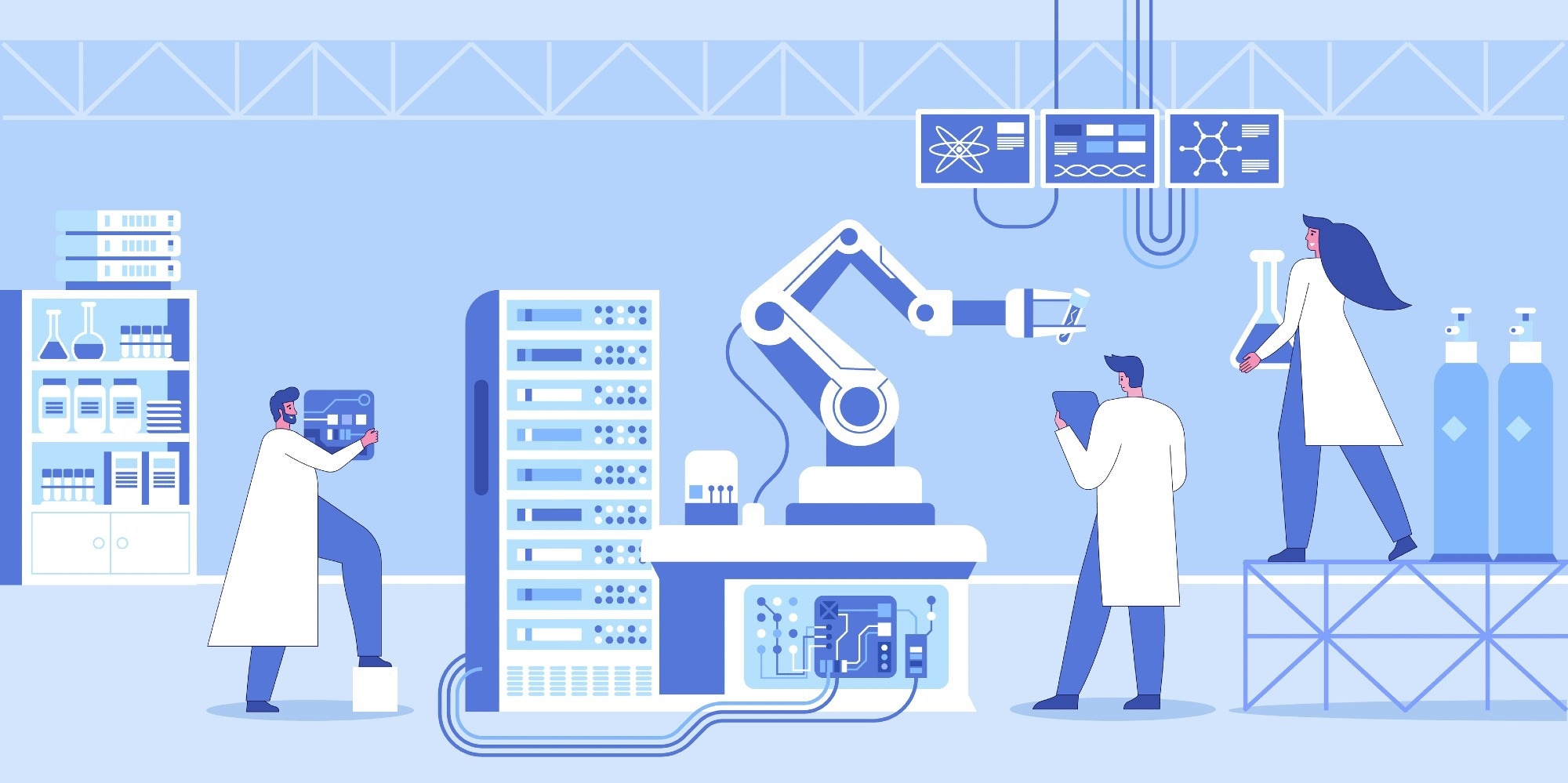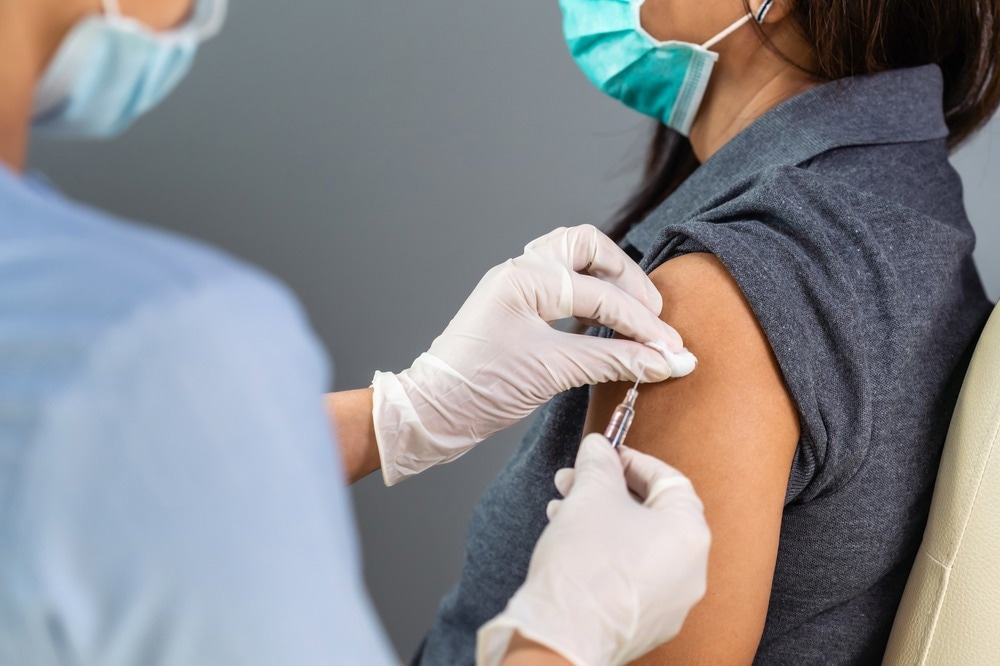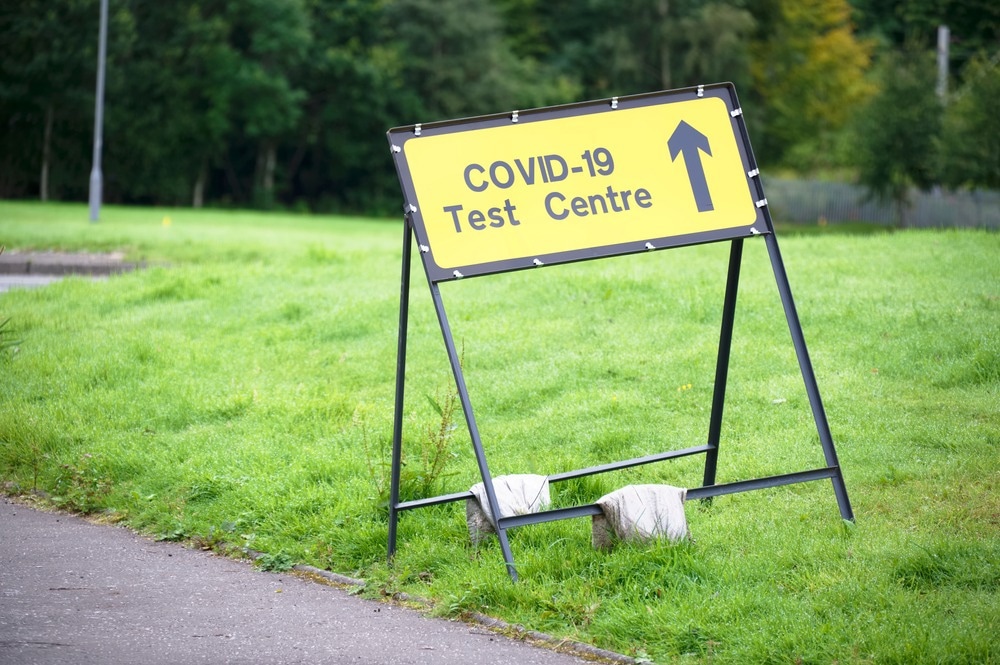As part of our SLAS Europe 2022 coverage, we speak to Steve Rees, Vice-President of Discovery Biology at AstraZeneca, about the challenges currently faced by the drug discovery sector and the new technologies that will help to overcome them.
Please could you introduce yourself and tell us about your role at AstraZeneca?
My name is Steve Rees, and I lead the Discovery Biology department at AstraZeneca based in Cambridge (UK), Gothenburg (SE) and Waltham (US). We do three things to help discover new medicines. We identify new drug targets; we then create the reagents and assays that allow us to turn those targets into projects and we are increasingly interested in cell and gene therapies.
Challenges in Drug Discovery - Steve Rees, AstraZeneca - SLAS Europe 2022
You were the opening keynote speaker for the SLAS Europe 2022 exhibition titled 'Challenges and Opportunities in Drug Discovery.' What do you personally believe to be some of the biggest challenges currently faced by the drug discovery sector, and how is AstraZeneca helping to address these issues?
The challenges faced in drug discovery are the same as they always have been: Which disease should I work on? Which target should I choose to work with that might enable me to create a medicine that could treat that disease? Finally, what is the patient population to which I would deliver that medicine?
These challenges are essentially the same as they always have been. What has changed are the technologies and capabilities available to help us address these challenges. We have seen considerable advances in technologies like genomics, transcriptomics, and proteomics, gene editing, data science, artificial intelligence and machine learning that are allowing us to understand diseases better, to identify better medicines.
We have seen the launch of a range of new therapeutic modalities, from PROTACs to siRNAs to messenger RNAs to cell and gene therapies, giving us different ways of treating disease. We can now access patient tissue and use methods like proteomics and transcriptomics to characterize that tissue, allowing us to identify patient biomarkers that tell us which patients to treat with the medicine. We are using these technologies at AstraZeneca and across the field to drive future success in drug discovery.

Image Credit: paulista/Shutterstock.com
Despite the challenges currently faced by this sector, we have seen great progress in the last decade. What have been some of the biggest advancements in drug discovery throughout the last decade? How has the emergence of these technologies furthered our understanding of disease pathology?
The most significant single technology transforming drug discovery over the last ten years is CRISPR-Cas9. This offers the ability to very precisely delete or change any gene in any cell type. CRISPR was only published in 2012: before 2012, nobody had heard of it. CRISPR is now used in every project that we have within AstraZeneca.
We use it to create cell and animal models of disease that help us to understand the role of targets in disease. We use these cell models to help us understand how our molecules work. We use it to discover new targets through a whole new science called functional genomics which allows us to delete one by one, each and every gene in the genome, to determine what the effect is on the biology of the cell. We use it to create cell therapy medicines and use it as a medicine in its own right.
There have of course been many other technology advances; a reduction in the cost of genome sequencing enabling the sequencing of thousands to millions of genomes, the creation of transcriptomic and proteomic technologies to understand disease, Cryo-electron microscopy to generate structures of large proteins, and of course the advent of Machine Learning and Artificial Intelligence in drug discovery.
One field that has seen particular attention recently is artificial intelligence. Despite its many proven benefits in drug discovery, some scientists are still hesitant to adopt AI in the lab. Why is this, and how can we increase individuals' understanding of AI?
Within AstraZeneca, we are applying artificial intelligence across the drug discovery process. For instance, we are using artificial intelligence to help us identify new drug targets. We are establishing whether we can use it to mine the world's data, to connect pieces of data that the scientists will not connect themselves, to generate new hypotheses for treating disease.
We use it in chemistry to help tell us what molecule we should make next and how we should make that molecule. We use it in biology; we use it to analyze images from high content screening. We also use it to predict patient biomarkers – so as you can see, it is being used across the board.
There has been some resistance amongst the scientific community to using artificial intelligence and machine learning, but I think that stems from the fact that perhaps there is a concern that some of these methods could replace scientists doing their jobs, as well as a little bit of uncertainty about how AI machine learning works.
The way that we are trying to break that down in AstraZeneca is to view artificial intelligence and machine learning simply as tools that allow us to do our jobs better; tools that allow us to simplify what we have done in the past, and tools that allow us to generate more knowledge than we could have in the past.
We encourage our scientists to think about the problems they are trying to solve with AI, rather than worrying about how a machine learning algorithm works. We encourage our scientists to use these methods to solve small problems, such as the use of image recognition to confirm that the cells you are working with are the cells you think they are, as well as big problems.

Image Credit: Ico Maker/Shutterstock.com
Exhibitions like SLAS have been helping researchers, institutions, and organizations collaborate on some of the challenges various sectors face in the life sciences for many years. How important do you believe collaboration is to the life sciences sector and, in particular, drug discovery, and what benefits does being able to attend these exhibitions have for collaborative partnerships?
Collaboration is completely integral to drug discovery and the life sciences sector, and I would go as far as to say that, without collaboration, we will fail to discover new medicines.
We see that within our work at AstraZeneca: we have over 1600 collaborations globally with academia, biotech companies and other pharma.
To give you a great example, in 2019, we opened the AstraZeneca Cancer Research UK Centre for Functional Genomics in Cambridge. This is a collaboration between AstraZeneca and Cancer Research UK, Europe's largest cancer charity. We partnered to create technology platforms that allow us to understand how our cancer medicines work and, again, to identify potential new drug targets in cancer. By working together, we combine the strength of the academic community in terms of technologies and basic understanding of disease and cell models, with AstraZeneca’s drug discovery expertise, to create a centre that meets both our needs.
By working in this way, we can do much more than either of us could do independently, which sums up collaboration. Meetings like SLAS are the perfect opportunity to create networks; to meet other scientists to create new collaborations.
For instance, when AstraZeneca moved to Cambridge, we had to build an entirely new infrastructure for compound management. We set up a collaboration to develop acoustic tube technology with organisations including Danaher, Azenta and Titians Software. Each organization owned a different piece of the technology required to make the ultimate solution: collaboration and partnership arose entirely because of networks created through meetings like SLAS.
The COVID-19 pandemic has also highlighted the importance of collaboration within science. As well as the importance of collaboration, are there any other lessons we can take from the pandemic and implement into life sciences practices?
For me, the most important lesson from the pandemic - from a life sciences perspective - is the requirement to continue investing, developing, and creating new technologies.
People often ask me, "Isn't it fantastic that we discovered new COVID vaccines in nine months?" I always want to reply with a different perspective. We did not discover new COVID vaccines in nine months - instead, we were able to create COVID vaccines because of the previous ten years of basic research that had gone into creating the technology platforms that created those vaccines.
We need to continue investing in fundamental research to create new technologies, which will have an application at some point in the future. For instance, BioNTech was not established to create vaccines or treat infectious diseases. BioNTech was established to create cancer vaccines - but when the pandemic came along, they realized that their technology could be rapidly adapted to create COVID vaccines. This fundamental investment in research, therefore, facilitated their vaccine rollout.

Image Credit: BaLL LunLa/Shutterstock.com
Continued advancements in technology have been one of the most significant driving forces behind the discoveries of new therapeutics. Are you hopeful we will see new therapeutics emerging over the coming years with continued technological advancements? What would this mean for global health worldwide?
I firmly believe we have a unique opportunity to transform global health in the coming years. That combines our ability to better understand disease through technologies like proteomics and transcriptomics and to deliver a range of new medicine modalities into the clinic.
As we look towards 2030, we will see messenger RNA medicines building off the success of the COVID vaccine. We will see gene editing as a medicine. The first CRISPR-based gene editing medicines are now in phase two clinical studies. These are medicines that have the opportunity to cure critical, life-threatening diseases, and they will be reaching patients.
The medicines toolbox, which historically has been small molecules and antibodies, will encompass a range of different medicine types as we move through this decade. As I say, it is through doing that, that we will be able to both treat disease and move from treatment to cure.
Are there any areas within the current drug discovery industry that would especially benefit from new technologies and processes? How might that impact other areas within the healthcare sector?
For us in AstraZeneca, and for me personally, the technology that would transform a lot of what I do is the development of targeted delivery systems for nucleic acid medicines. This means nanoparticle-type delivery systems that would allow me to deliver nucleotide therapeutics in a targeted way to any cell in the body. That does not currently exist today. We can deliver a nanoparticle medicine to the liver using LNP or similar technologies. If you want to deliver nanoparticle medicines to the heart, the kidney, the pancreas, or the lung - that is much more challenging.
If we can solve that problem, we will be able to deliver many medicines and treat a whole range of diseases in this way.
You have served as the Chair of the European Laboratory Research and Innovation Group. What role does innovation play within life science, particularly in drug discovery?
Without innovation in drug discovery, we will find nothing. We need to innovate today to deliver the projects we are currently running faster and more effectively than ever before. However, we also need to be focusing on innovating for tomorrow.
What transformative technologies will allow us to be better at drug discovery as we move forward? When you reflect on the likes of the mRNA vaccines, that is a beautiful example of innovation that has transformed our ability to treat a specific disease. Twenty years ago, we would not have had RNA vaccines. The technology did not exist. We now have RNA vaccines with the potential to vaccinate people against COVID and various diseases.
Throughout your impressive career, what has been your proudest achievement?
My proudest achievement is our work during the COVID-19 pandemic to build the Cambridge COVID-19 Test Centre. This was a collaboration between AstraZeneca, GlaxoSmithKline, the University of Cambridge, and Charles River to create a diagnostic test center in Cambridge. The goal was to test tens of thousands of samples daily as part of the UK government's national PCR testing program.
We created a center from nothing to an operational lab in about six weeks, and that was achieved through amazing collaboration, partnership, incredibly hard work, and wonderful people. It was, hopefully, a once-in-a-lifetime event that made a huge difference to people during a national crisis.

Image Credit: richardjohnson/Shutterstock.com
What's next for you in AstraZeneca? Are there any exciting projects that you're involved in?
Every project that we are involved in at AstraZeneca is exciting. The most exciting thing we are doing today at AstraZeneca is our work to identify novel drug targets related to disease. We are using a variety of different methods that will allow us to understand disease and identify new targets, which we can then take on into discovery. Using these technologies, we hope to identify targets critical to disease processes, which will increase our ability to deliver medicines to the clinic successfully.
About Steve Rees
Steve is Vice-President of Discovery Biology at AstraZeneca with responsibility for reagent generation and assay development, functional genomics, and cell and gene therapy. Previously Steve led the Screening Sciences department with accountability for Compound Management, Hit Discovery and Lead Optimisation biology. Prior to joining AstraZeneca, Steve worked at GlaxoSmithKline for 24 years. 
He has served as Chair of the European Laboratory Research and Innovation Group and Chair of the European council of the Society of Laboratory Automation and Screening, and is Industry Trustee of the British Pharmacological Society. Steve was awarded an OBE in 2021 for services to science and the COVID-19 response.